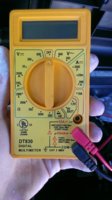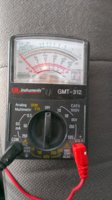kuthe64
XS650 Enthusiast
Having some trouble using my multimeter to test the ohms of my rotor. I touch the negative and positive together and get the .3 that i would subtract from the total ohms that i get when i test the rotor. I have an 81 special I remove the stator completely so that I have full access to the rotor. Once i place the multimeter leads on the rotor I get absolutely nothing except when I place them both on the same slip ring the reading jumps all over the place anywhere from 2-180.
I have cleaned the rotor so that I am getting a good connection.
Also there are very distinctive circles in the copper where the bushes are, is this a sign of a bad rotor?
Does the rotor have to be off the bike to test it?
Does the key have to be turned on?
Should the leads be placed on the same or different slip rings?
I have cleaned the rotor so that I am getting a good connection.
Also there are very distinctive circles in the copper where the bushes are, is this a sign of a bad rotor?
Does the rotor have to be off the bike to test it?
Does the key have to be turned on?
Should the leads be placed on the same or different slip rings?


